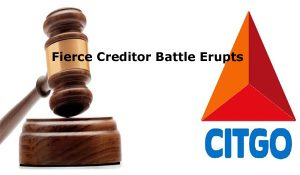- Both EVs and home heat pumps have found enthusiasm among customers but face lingering reluctance from the people who sell and install them.

Nathaniel Bullard, Bloomberg News
NEW YORK
EnergiesNet.com 07 14 2023
The data are in, and US auto buyers are increasingly keen on electric vehicles. EVs were 6.5% of new car purchases in the first half of 2023, up from 2.5% two years ago and 0.7% in 2018. EVs also made up nearly 1% of used car sales — more than 82,000 vehicles — in the first half of the year, according to Cox Automotive Inc.
Those numbers are striking, but they are also on trend for what market forecasters and automakers have expected. More available electric models, government support for EVs at the manufacturing and purchase level and the standardization of charging technology all give customers greater latitude and confidence to make their first EV purchase.
There is a complicating factor, however: dealers’ interest in selling EVs. In another recent report, Cox surveyed more than 1,100 consumers and more than 150 auto dealers about their perceptions of electric vehicles. Fifty-three percent of consumers said they felt “EVs are the future and will largely replace gas engines over time” — but only 31% of dealers said they felt the same way. And nearly half of dealers felt “that EVs need to prove themselves to the marketplace,” even if consumers themselves increasingly view them as the future.
This is not so much a gap in expectations as it is a gulf. If only one-third of dealers believe that EVs are the future, they are less likely as a group to proactively build sales and support functions for EVs. If dealers think that cars themselves need to prove their worth, they are unlikely to educate themselves on current and future models and their potential appeal to the market. That could leave customers under-served, or limited in their choices to brands like Tesla that eschew traditional dealership relationships entirely.
There is an analogy here with another consumer-facing electric product: heat pumps. Heat-pump adoption in Europe and the US is soaring, and last year for the first time, US households bought more heat pumps than gas furnaces. The reasons for buyer enthusiasm include improved performance over older technology, government incentives, and hopes of cutting utility costs through electrification.

But just as with electric vehicles, the incumbent network often pushes back on new technology, as Bloomberg Green’s own Todd Woody related firsthand earlier this year. Contractors may not be familiar with the latest options; they may have existing sales-channel relationships limiting their access to the latest and greatest and they fear bad reviews.
Therefore raising installer awareness and education, not just consumer eagerness, has been part of the process of rolling out heat pumps. The US Department of Energy runs multiple training programs on how today’s systems function, and now works with approximately 1,100 of the 1,400 heating ventilation and air conditioning (HVAC) training programs in the US. These initiatives are certainly helpful, especially at the front end of the workforce, as new professionals enter the space fully versed in today’s technology and emerging customer preferences as well.
In both cases, a wider deployment of new technology requires triangulating consumers, sellers and installers, and products. Consumers have preferences, which shift over time. Sellers and installers have ingrained habits and (in the case of auto dealers) legislation protecting their incumbent status and business practices. Products follow pathways as they improve in capability, cost or both over time. At the moment, customers interested in EVs and heat pumps can choose from increasingly attractive products — but they may also face seller and installer resistance that could limit adoption in the long run.
The seller and installer roles for these key decarbonization technologies will be vital, too, as the demand side of the global energy mix becomes a prime mover of changing energy consumption. BloombergNEF’s latest estimate of the investment needed to reach net zero emissions in 2050 finds that 51% of the $194 trillion total will be spent on EVs and heat pumps. Reaching net zero means that nearly $100 trillion dollars must flow through consumer-driven channels, which include both buyers and sellers.
Even investing a fraction of that amount will require a better alignment between what buyers increasingly want and what car dealers and HVAC contractors still sometimes resist. Consumers are heading toward new technology, and government support for it is already there. There’s no guarantee that dealers and installers will inevitably head that way too.
But that lack of a guarantee is also where some auto dealers and contractors may see opportunity. Perhaps there will be new dealerships specializing in EV-only sales (starting in the used market, at least in the US), or HVAC professionals who work only on all-electric properties.
Both buyers and sellers can win, but only by following the path that technology is setting. Winston Churchill said, “We shape our buildings, and afterwards our buildings shape us.” We have built new technologies, and as they reach scale, they will shape their own channels for deployment. Whether those channels look familiar or novel, EVs and heat pumps will need wide acceptance and adoption to reduce emissions at a global scale.
Nat Bullard is a senior contributor to BloombergNEF and writes the Sparklines column for Bloomberg Green. He advises early-stage climate technology companies and climate investors.
bloomberg.com 07 13 2023











